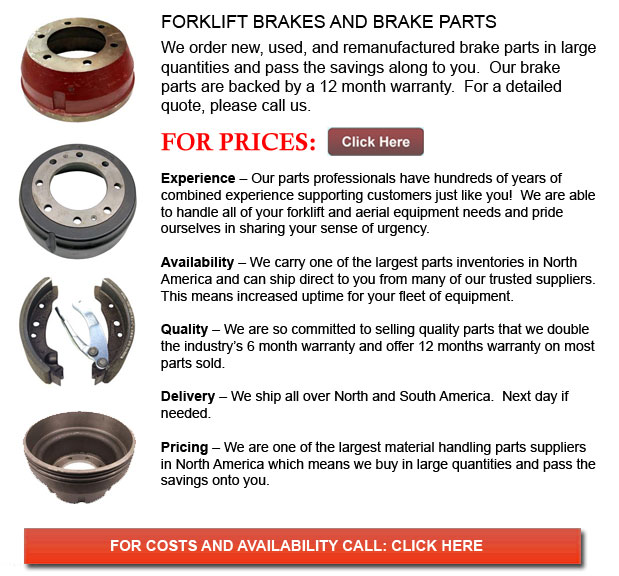
Forklift Brakes - A brake drum is in which the friction is provided by the brake pads or brake shoes. The shoes or pads press up against the rotating brake drum. There are several different brake drums kinds along with particular specific differences. A "break drum" would usually refer to whenever either shoes or pads press onto the inner surface of the drum. A "clasp brake" is the term utilized to be able to describe whenever shoes press next to the exterior of the drum. One more type of brake, known as a "band brake" utilizes a flexible band or belt to wrap round the exterior of the drum. If the drum is pinched in between two shoes, it could be called a "pinch brake drum." Like a conventional disc brake, these kinds of brakes are quite uncommon.
Early brake drums, previous to the year 1995, needed to be consistently adjusted so as to compensate for wear of the drum and shoe. "Low pedal" could result if the needed modifications are not done satisfactorily. The vehicle could become hazardous and the brakes can become useless whenever low pedal is combined together with brake fade.
There are quite a few various Self-Adjusting systems used for braking available today. They can be classed into two individual categories, the RAD and RAI. RAI systems are built in systems which help the apparatus recover from overheating. The most popular RAI makers are AP, Bendix, Lucas, and Bosch. The most well-known RAD systems comprise Bendix, Ford recovery systems, Volkswagen, VAG and AP.
Self-adjusting brakes normally utilize a mechanism that engages only when the vehicle is being stopped from reverse motion. This stopping approach is acceptable for use where all wheels utilize brake drums. Nearly all vehicles these days utilize disc brakes on the front wheels. By functioning only in reverse it is less possible that the brakes would be adjusted while hot and the brake drums are expanded. If tweaked while hot, "dragging brakes" can take place, which increases fuel intake and accelerates wear. A ratchet device which becomes engaged as the hand brake is set is one more way the self repositioning brakes may function. This means is just suitable in applications where rear brake drums are utilized. When the parking or emergency brake actuator lever goes over a certain amount of travel, the ratchet developments an adjuster screw and the brake shoes move in the direction of the drum.
Located at the base of the drum sits the manual adjustment knob. It could be adjusted making use of the hole on the other side of the wheel. You will have to go beneath the vehicle utilizing a flathead screwdriver. It is really important to be able to adjust each wheel equally and to move the click wheel properly because an uneven adjustment may pull the vehicle one side during heavy braking. The most effective method so as to make sure this tiresome job is completed carefully is to either raise each wheel off the ground and spin it by hand while measuring how much force it takes and feeling if the shoes are dragging, or give every\each and every one the exact amount of clicks using the hand and then perform a road test.
![]() Click to Download the pdf
Click to Download the pdf
Forklift Parts
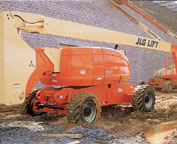
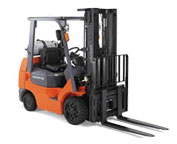
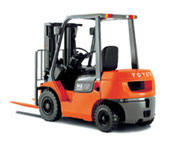
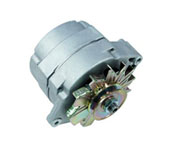
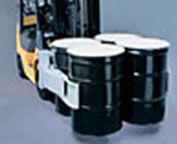


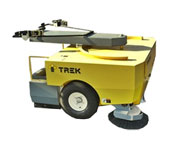
Lift Parts Express
TOLL FREE: 1-888-695-7994
Miami, Florida
forkliftpartsinmiami.com
Email Us
About Us


